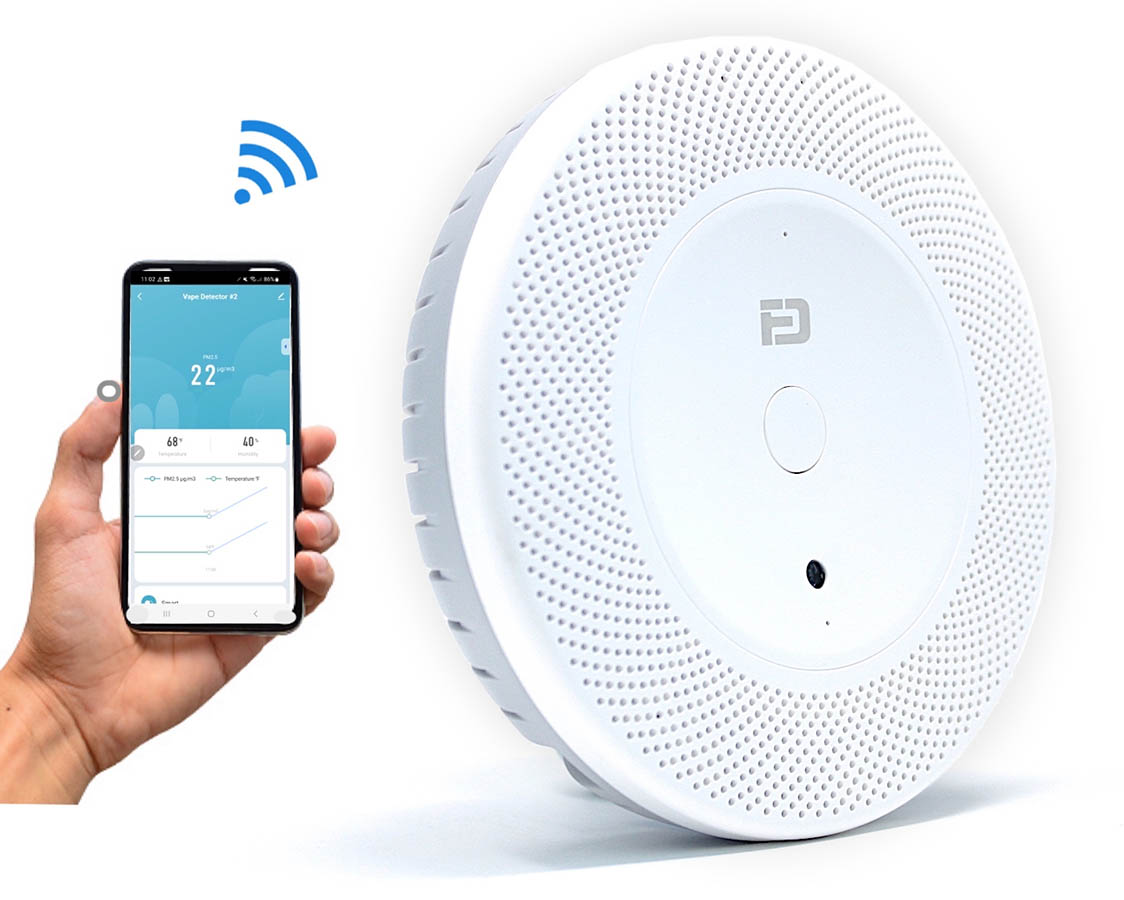In recent years, the usage of electronic cigarettes has increased leading to concerns over the safety and health of users. Vaping is a risk for indirect smoke exposure that is particularly dangerous in indoor settings like workplaces, homes, and schools. To address this issue, many people are looking to a vape detector which is able to detect and monitor smoking in indoor areas. In this post, we’ll look at the various types of vape detectors that are available, their features, and how they can be utilized in different situations.

Vape detectors use sensors to detect vape particles and smoke in the air. These devices are used to measure indoor vape emissions. This can be helpful in enforcing smoking-free laws and in identifying areas where vaping might occur. Vape detectors can be found in many different types that include those designed for use at homes, at schools and other public places.
Vape detector use are becoming increasingly popular among families who want to protect their children from the harmful effects of secondhand smoke. They’re small, subtle and are suitable for use in any part of the house where vaping is likely to be a factor. It includes bedrooms and living rooms. The detectors can be outfitted with a range of sensors, including PM2.5 sensor, which detects particles released by vaping devices. A lot of home vape detectors come with smartphone apps which will notify you if vaping is detected.
Schools are another place where vape detectors can be employed to deal with the problem of indoor vaping. Schools are often governed by no-smoking rules that also prohibit the use of vaping devices. Vape detector can help administrators in enforcing these rules and spot locations where students could be smoking. These devices are usually installed in public spaces like bathrooms, hallways and locker rooms. They can also be connected to central monitoring systems which notify administrators whenever vaping has occurred or been detected.
They are better than the ones made for home use, since they cover a greater area and can differentiate between vaping (and other forms of smoke) and particles. They use a combination of sensors, such as laser scattering sensors, to detect vaping, and provide accurate readings. Some models even distinguish between different kinds of vaping equipment, including e-cigarettes and vaping pens.
In addition to homes and schools vape detectors are being used in public areas such as casinos, hotels as well as workplaces. These detectors are designed to provide a secure and healthy environment for employees and guests by monitoring the quality of indoor air and finding vaping. They can be installed in areas that are common to everyone, such as lobby areas, conference rooms and break rooms. They will provide real-time information on indoor air quality.
Laser scattering technology is one the most significant features of a vape detecting device. It can detect particles of smoke from a vape. This technology is capable of detecting tiny amounts of vape smoke. It works by shining a laser beam through the air and detecting the scattering of light caused by the presence of particles. Vape detectors are able to provide accurate results on the quality of air in the indoor and pinpoint the areas where vaping is common.
Vape detectors at home is also able to be connected to a smartphone application, which sends real-time notifications and alerts when vaping has been observed. This feature is helpful to parents interested in monitoring their children’s habits of smoking indoors and school administrators that want to know when students vape. Certain vape detectors are also equipped with cloud-based storage of data, that can be beneficial to track the quality of indoor air and identifying areas that require more care.
Vape detectors are a reliable method of monitoring and detecting indoor vaping in homes in schools, homes, and other public spaces. They utilize a variety of sensors and technology to give precise readings of the quality of air in the indoor environment and are connected to smartphones apps that provide real-time alerts or notifications.
Vape detectors protect people who are impacted by indoor air pollution. They eliminate distractions and they help us focus on ensuring highest quality of air possible. The technology behind these detectors is relatively new, and their effects must be investigated. But, it’s believed that they can be used to improve indoor air quality and our overall health. Vape detectors are highly effective in taking in harmful elements and reducing them, such as carbon monoxide as well as ultrafine particles (PM2.5). Vape detectors are able to identify vaping substances more accurately than it has ever been. Vape detectors make positively impacted both health and security. As this new technology continues to expand in its use, it could eventually help us to protect our family members from harms related to secondhand smoking or vaping in our homes.
